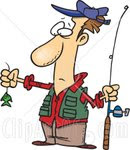You don’t want a cat – there’s that whole litter box thing. You don’t want to train a puppy, plus what about when you want to go away for the night? Birds make such a mess and can be quite noisy. And then there’s those “rodent” things.
When we found out we were expecting our first child we decided to decorate the nursery in tropical fish decor. Then we thought a fish tank in the room would be perfect for the “white noise” and for a nice little night light. So we bought a 10 gallon tank set that cost about $40 for everything but the fish. We had no clue about caring for fish, so we only got a few fancy guppies that were about $3 each. How cheap!!
Who knew we’d become addicted? Well, me anyways. We learned that guppies are live bearers, meaning that they have “live” babies instead of laying eggs and they can be all sorts of pretty colors. Needless to say, we learned a few things about raising guppies and haven’t spent any more money buying fish (well, except for a few more different colored guppies and a bigger tank to start breeding our own)!
Fish are so easy to take care of and are rather inexpensive to keep. We clean out their tank a little bit each month and spend about $2 on food for them that lasts about 3 months. The kids all love the guppies – their pretty colors and especially watching the babies grow. I love the guppies because they’re cheap, relaxing, neat, quiet and they teach the children about responsibility with having a pet.
So before you jump down their throats about not having a pet, tell the kids to consider some guppies. If you’re looking to do some more research on them, check out www.guppies.com . There are plenty of tips and people there that are willing to answer all of your questions.
Jennifer is the owner of http://www.MomOnABudget.com, a resource for money saving tips and ideas, quick and easy recipes, how to decorate on a budget, work at home ideas and so much more.
Article Source: http://EzineArticles.com/?expert=Jennifer_Shircel
